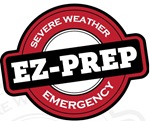
When you run a business, there’s nothing worse than a missed opportunity. And when an unexpected event—whether it’s natural or man-made—disrupts your business, every minute can feel like a missed opportunity.
A robust business continuity plan serves as your company's lifeline during turbulent times, minimizing downtime and mitigating damages if and when disruption occurs. Beyond immediate crisis management, it strengthens customer and employee confidence, reduces overall business risks, and protects your financial foundation from devastating losses.
Read on to discover expert strategies for developing an effective business continuity plan tailored to keep your business on track and learn how proper planning today can preserve your business opportunities tomorrow.
What is a business continuity plan?
A business continuity plan (BCP) is a written, strategic plan to ensure that business operations can continue during or after a disruption. That might include natural or man-made events or even digital disruptions. Some examples include:
- Natural disasters
- Supply chain disruption
- Cyber-attacks or digital failure
- Power or utility outages
- Pandemics or other health crises
- Human error
- Civil disturbances or acts of terrorism
"Every plan should be tailored to the specific needs and potential threats to that business,” says Grange Risk Control Technical Design Manager Peter Mull. “In general, your plan should include preparation, response, and recovery processes to minimize downtime and maintain essential functions.”

Learn about our
Business Insurance
A BCP is generally broad in scope and focused on maintaining critical business operations—which includes personnel, facilities, and supply chain considerations—to ensure that your business continues operating despite possible disruptions.
According to Mull, a comprehensive business continuity plan should include five key components:
Risk Assessment & Business Impact Analysis (BIA)
A thorough risk assessment can help you proactively identify critical functions, systems, and processes, and can help you better analyze the impact of potential disruptions.
Recovery Strategies
These define how to maintain or restore operations quickly. “This might include alternate site arrangements, secondary production facilities, manual workarounds, and restoring IT to ensure systems and data are recovered,” Mull says.
Plan Development
When creating your BCP, it’s important to document roles, responsibilities, and action plans. You can use this information to develop step-by-step procedures and checklists in the event of a disruption.
Communication Plan
Define both internal and external communication protocols. This should include identifying which stakeholder(s) will own these processes.
Training, Testing, and Maintenance
Once your plan is drafted, employees should be trained on specific roles and protocols. Businesses should also conduct mock drills periodically to test their BCP, and make changes or updates based on any new insights or findings.
What are the benefits of having a business continuity plan in place?
A BCP offers a variety of benefits that help protect your business, your employees, your reputation, and your bottom line. A few of the benefits include:
- Minimizing downtime
- Reducing financial loss
- Protecting your brand and customer trust
- Ensuring employee safety
- Ensuring physical and digital security
- Improving organizational resilience and regulatory compliance
Not having a plan in place can have the opposite effect, potentially leading to lost revenue and customers, legal or regulatory penalties, reputation damage, and confusion among employees. In some instances, it could even put your business at risk for permanent closure after a major incident.
While business insurance can help provide financial compensation after an incident, Mull warns that insurance can’t—and shouldn’t—replace a proactive and comprehensive business continuity plan.
"Insurance does not cover lost customers, reputation damage, or regulatory fines due to poor response, and will only cover up to the policy limits,” he says. “BCPs and insurance are complementary, not interchangeable.”
How to create a business continuity plan: 5 steps to take
Now that we’ve covered the importance of creating a BCP, it’s time to put the advice into action. Follow these five steps to create a plan that’s tailored to your business's unique needs and circumstances.
1. Uncover your risks
The two biggest mistakes businesses make are failing to identify a potential threat and underestimating the severity of a known threat. To avoid these mistakes, follow these simple steps:
- Identify your threats, including natural hazards that might affect the location of your business.
- Rank the probability of those threats, then rank the severity of each.
- Multiply the probability and severity to create scores for each and address the highest scores first.
2. Analyze your operations
Responding quickly to a disruption can be the difference between survival and closure. Identify your key business functions and processes and decide how long you can go without them and remain in business. Consider the answers to these questions when formulating your answer:
- What is your main product or service?
- What are the things that could most likely impact your ability to do business?
- Which of your business functions and processes have legal, contractual, regulatory or financial obligations?
3. Know how to contact employees and vendors
What happens if an emergency prevents your employees from accessing your business? Would a local disaster also affect your vendors? Two-way communication with your employees and vendors is critical before, during and after a disaster. Make sure you can answer the following questions:
- Would you know how to reach your employees?
- Do you have current home and mobile telephone numbers, addresses, emails and emergency contact information?
- Do you have current contact information for key suppliers, vendors and business administrators?
- Is all this information available offsite from your business location?
4. Have an information technology (IT) plan
No matter the size or scope of your business, it’s nearly a certainty that you rely on computer hardware, software and digital data. Having access to these tools and information is crucial to your ability to stay in business.
- Keep backup copies of everything on or accessed by your computer including operating systems, critical software, files, logins and passwords.
- Store one backup copy onsite and another in a safe at an offsite location that will still be available in the event of a large-scale disaster.
- Before an event, shut down and unplug all your computer hardware. Consider elevating or moving equipment offsite.
5. Prepare your business finances
Whether it’s having the correct insurance or an emergency cash fund on hand, preparing your finances in advance of a disaster is critical to keeping you in operation during a disruption.
- A well-stocked emergency cash supply can help you buy supplies or crucial equipment during a disaster.
- Identify all financial obligations and expenses that must be paid.
- Work with your independent insurance agent to determine the best coverage for your business.
To help you get started, Grange Insurance and the Insurance Institute for Business & Home Safety (IBHS) are happy to offer the following resources to help you develop a business continuity plan that fits your needs. You can also contact a Grange Insurance Risk Control Specialist for more assistance with business continuity planning or additional resources.

IBHS’s simple-to-use business continuity program that focuses on recovering from disruptions to stay open for business.
Download toolkit

Is a storm heading your way? Check out IBHS’s severe weather planning guide and customizable checklist.
Download toolkit
References
- Insurance Institute for Business & Home Safety
Coverages described herein may not be available in all states. Please contact a local independent Grange agent for complete details on coverages and discounts. If the policy coverage descriptions herein conflict with the language in the policy, the language in the policy applies. The material provided above is for informational, educational, or suggestion purposes and does not imply coverage. WE RESERVE THE RIGHT TO REFUSE TO QUOTE ANY INDIVIDUAL PREMIUM RATE FOR THE INSURANCE HEREIN ADVERTISED. Grange Insurance policies are underwritten by Grange Insurance Company, Trustgard Insurance Company, Grange Indemnity Insurance Company, Grange Insurance Company of Michigan and Grange Property & Casualty Insurance Company*. Not all companies are licensed in all states. *Not licensed in Pennsylvania.